- 10 June 2016
- Science & Environment
-
(환경) 지구인구 80% 이상이 인공조명으로 오염된 하늘 아래 살고 있다과학과 테크놀로지/환경 2016. 6. 14. 11:34
출처: http://www.bbc.com/news/science-environment-36492596
Light pollution 'affects 80% of global population'
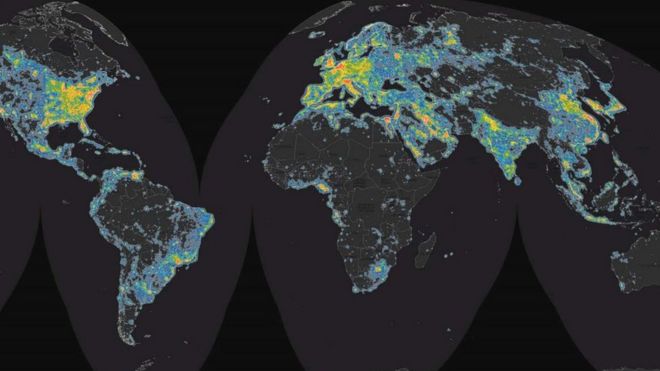 SCIENCE ADVANCES
SCIENCE ADVANCESSatellite data and ground measurements were used to create a global map of light pollution More than 80% of the world's population lives under light-polluted skies, a study suggests.
Scientists explain in Science Advances how ground measurements and satellite data were used to create an atlas of a world brightened by artificial lights.
It reveals that the population of Singapore, Kuwait and Qatar experience the brightest night skies. 지구에서 야간에 가장 밝은 인공조명: 싱가포르, 쿠웨이트, 카타르.
Conversely, people living in Chad, Central African Republic and Madagascar are least affected by light pollution. 지구에서 야간에 가장 어두운 곳: 차드, 중앙아프리카, 마다가스카르.
Dr Christopher Kyba, from the German Research Centre for Geosciences in Potsdam, said: "The artificial light in our environment is coming from a lot of different things.
"Street lights are a really important component, but we also have lights from our windows in our homes and businesses, from the headlights of our cars and illuminated billboards."
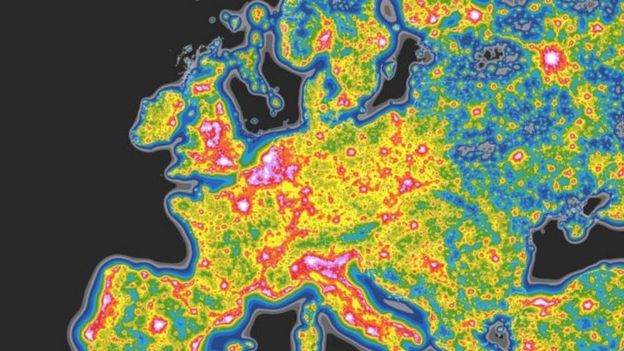 SCIENCE ADVANCES
SCIENCE ADVANCESThe study estimates 99% of Europe's population experiences an artificial glow in the night sky The brightness map reveals that 83% of the world's population, and 99% of Europeans and people in the US, live under skies nearly 10% brighter than their natural starry state.
For some though the artificial glow was even greater, said Dr Kyba.
"About 14% of the world's population don't even use their night-time vision," he explained.
"The night is so bright that they use their colour daytime vision to look up at the sky."
In Singapore, the entire population lives under this extreme level of artificial night-time brightness, and it is a problem affecting many other parts of the world.
"Twenty percent of the people in Europe and 37% of the people in the US don't use their night vision," said Dr Kyba. "It's really an enormous number."
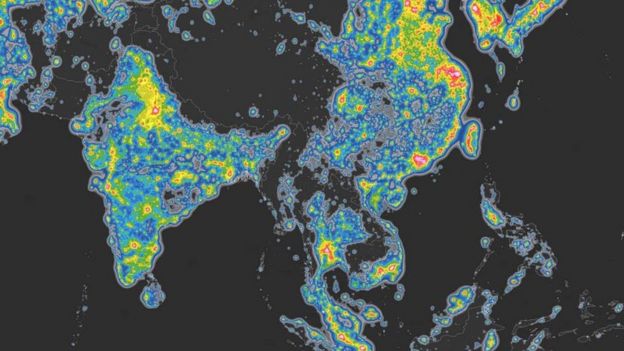 SCIENCE ADVANCES
SCIENCE ADVANCESMany people do not have to use their black-and-white night vision to look up at the sky He added: "In the UK, 26% of people are using colour vision and not night vision." (colour vision: 色覺, 色視) (night vision: 야간시력)
The researchers warn that nights that never get darker than twilight are affecting (nocturnal animals, while in humans, the trend has been linked to sleep disorders and disease. 야간조명의 문제점: 야간에 조명 때문에 밝은 것은 인간의 수면에 야행성 동물에게 영향을 미침.
Dr Kyba said that while lighting was important for development and safety, technology needed to improve.
"There are a lot of street lights that are not particularly well designed," he explained.
"They shine light into areas that are not useful - so up into the sky, for example, isn't really useful for anybody.
"There's a big difference between having a well-lit street, which means everybody can get around really easily and safely, and a brightly lit street, which could mean there's too much light and it's not helping anyone."
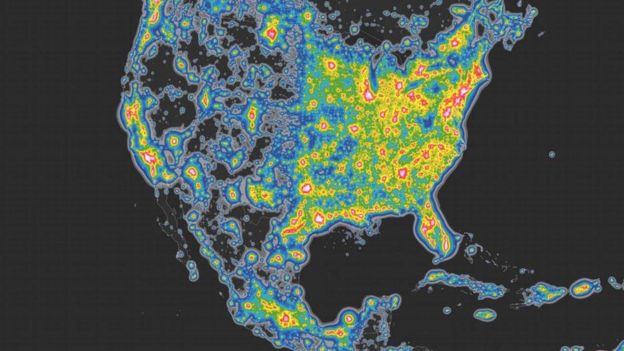 SCIENCE ADVANCES
SCIENCE ADVANCESThe researchers say better designed street lighting could help to cut light pollution The paper suggests that lights that are shielded, or can dim or turn off while not being used, could help to reduce light pollution as well as save energy.
The researchers add that light pollution is hindering astronomy: a third of the world now cannot see the Milky Way.
Follow Rebecca on Twitter: @BBCMorelle
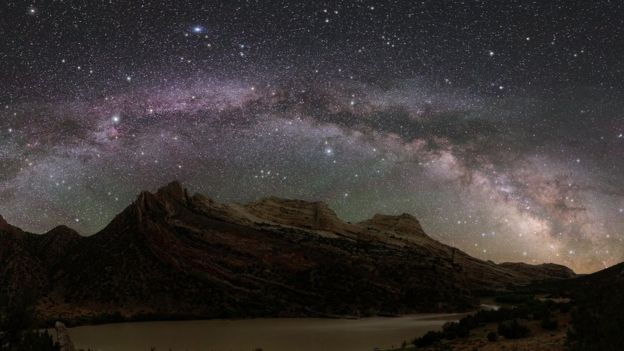 DAN DURISCOE
DAN DURISCOEOne third of the world cannot now see the Milky Way '과학과 테크놀로지 > 환경' 카테고리의 다른 글
(환경) 동물이 인간에게 전파하는 질병을 예측하는 방법, 과학자들이 발견 (0) 2016.06.14 (환경) 엘니뇨는 금년도 이산화탄소 농도 높일 가능성 있어 보인다 (0) 2016.06.14 (환경) 미세먼지 (0) 2016.05.21 (환경) 4월의 기온 기록을 깨다 (0) 2016.05.17 (환경) 불법 야생동물 거래에 제동 걸자는 환경운동가들 (0) 2016.05.09